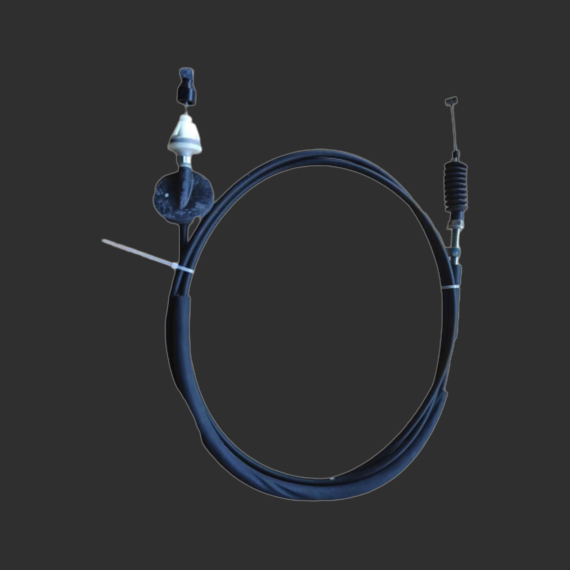Throttle Cable for Push and Pull Control Mechanisms in Various Applications
Understanding Push and Pull Throttle Cables Mechanisms and Applications
Throttle cables play a crucial role in the operation of various vehicles and machinery, serving as the vital link between the driver's input and the engine's response. Among the different types of throttle cables, push and pull throttle cables are widely used in motorcycles, ATVs, lawnmowers, and various other applications. This article aims to explore the mechanisms of push and pull throttle cables and their significance in ensuring effective engine management.
The Basics of Throttle Cables
At their core, throttle cables are mechanical devices designed to control the flow of air and fuel into an engine, adjusting the engine speed and power output based on the driver's input. The throttle typically consists of a cable that stretches or compresses when the throttle grip or pedal is operated. There are two primary types of throttle cables push cables and pull cables.
Push Throttle Cables As the name suggests, push throttle cables are designed to function by pushing the throttle body open. When the driver pushes on the throttle grip or pedal, the cable transmits this force to open the throttle valve, allowing more air and fuel mixture to reach the engine, which in turn increases the engine's power output.
Pull Throttle Cables Conversely, pull throttle cables operate by pulling the throttle body shut. When the driver releases the throttle grip or pedal, the tension in the cable pulls the throttle valve back to its original position. This mechanism is crucial for reducing engine power and ensuring the vehicle slows down or idles appropriately.
How Do Push and Pull Cables Work Together?
In many applications, especially in more complex systems such as motorcycles, both push and pull cables may be used in conjunction. This dual mechanism allows for greater precision in throttle control, improving the response of the engine to the driver's input. The push cable opens the throttle valve, while the pull cable ensures that it closes smoothly, enabling more efficient engine management.
The synchronization between push and pull cables is essential for maintaining optimal engine performance. If either cable fails or becomes misaligned, it could lead to erratic throttle responses or, in critical situations, a loss of control over the vehicle. Proper installation and regular maintenance of these cables are necessary to ensure safe and reliable operation.
push and pull throttle cable

Applications of Push and Pull Throttle Cables
Push and pull throttle cables find extensive applications beyond just motorcycles and ATVs. They are commonly found in lawn and garden equipment, outboard motors, and even in certain types of industrial machinery. For instance, in lawnmowers, a pull throttle cable may control the engine speed, allowing the operator to adjust the power output according to the type of grass being cut or the mowing conditions.
In automotive applications, while electronic throttle control systems are becoming more prevalent, traditional mechanical throttle cables remain relevant, especially in older vehicles or performance cars where direct mechanical control offers a more immediate and tactile driving experience.
Maintenance and Troubleshooting
Maintaining push and pull throttle cables is crucial for safety and performance. Regular inspections can help identify issues such as frayed cables, rusted components, or misaligned parts. Lubricating the cable and ensuring that it moves freely without obstruction will facilitate smooth operation.
If a driver experiences sudden changes in throttle response or finds that the vehicle hesitates or stutters during acceleration, it would be wise to inspect the throttle cables promptly. Addressing issues early can prevent further damage and ensure a better driving experience.
Conclusion
Push and pull throttle cables may seem like simple components, yet they play an integral role in the functionality of various vehicles and machinery. Understanding their operation, applications, and maintenance can help users appreciate their importance in ensuring efficient engine performance. Whether in a motorcycle, lawnmower, or industrial equipment, the effective management of throttle cables contributes significantly to the overall safety and functionality of the machine. By keeping these cables in top condition, operators can maintain smooth control over their vehicles and machinery, ultimately enhancing their efficiency and longevity.
-
Workings of Clutch Pipe and Hose SystemsNewsJun.04,2025
-
The Inner Workings of Hand Brake Cable SystemsNewsJun.04,2025
-
The Secrets of Throttle and Accelerator CablesNewsJun.04,2025
-
The Hidden Lifeline of Your Transmission Gear Shift CablesNewsJun.04,2025
-
Demystifying Gear Cables and Shift LinkagesNewsJun.04,2025
-
Decoding Clutch Line Systems A Comprehensive GuideNewsJun.04,2025
